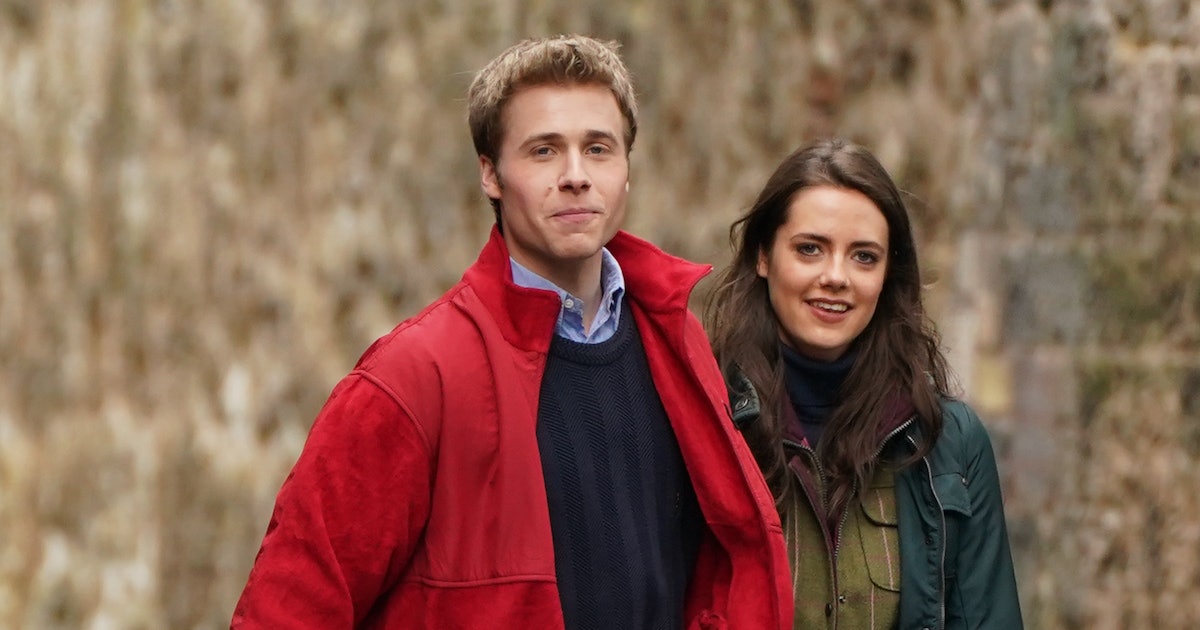Wrapping up its six-season run, “The Crown” showed how good long-form TV can be.
Writer-producr Peter Morgan had already mastered the short take: His Oscar-nominated “The Queen” (2006) was a brilliant visit to a brief, befuddling time after Diana’s death.
Then he took the big sweep: In seven years, six seasons and 60 episodes, he viewed the first 54 years of Elizabeth II’s reign.
The story ended with Charles’ wedding in 2005, with his mom ready for 17 more years. Getting to that point was fascinating, in the six episodes that arrived Thursday (Dec. 14) on Netflix.
The strongest focus was on William – in a monosyllabic funk after his mother’s death, then emerging as a steady and decent chap who finds Kate. (They’re shown here). Still, these episodes had detours:
— The second one switched to Tony Blair, a favorite subject. Morgan had focused on him in two TV movies (“The Deal” and “A Special Relationship”) and featured him in “The Crown.” Now he has Elizabeth marveling at his soaring popularity, as hers sinks.
— The fourth focuses on Margaret, Elizabeth’s younger sister. Like most “spare heirs” (Harry, Andrew, etc.), she sought fun, while the first-born was ready for duty.
The Margaret episode had some quietly moving moments, as Elizabeth longed for her sister … and for her own youth. The Blair one was a surprising delight.
Stunned by his popularity, Elizabeth asks Blair for ideas to modernize the monarchy. The result brings a hilarious account of antiquated jobs (from swan-minding to napkin-folding) and titles … and then an intresting conclusion: As silly as those jobs might seem, they’re held by diligent, working folks who take pride in their tasks.
(Blair’s popularity did eventually fade, as he became tethered to the Iraq war. Before then, however, we see him desperately trying to get Bill Clinton to take action against Serbian genocide; it’s a plotline that points powerfully to the Ukraine struggles.)
Still, “The Crown” is strongest when it sticks to the royals. Morgan even seems to have softened: Elizabeth, often confounded during “The Queen,” is now gentle and wise. Her husband Phillip, a cruel and unbending force earlier, is now surprisingly astute.
Charles still struggles with human emotions, but is trying. Harry is still lost and not really trying. But William and Kate emerge as immensely likable people.
Morgan does suggest that Kate’s mother maneuvered things, pointing her daughter toward the prince. But he keeps Kate blameless: We see a vigorous and confident young woman, perfectly suited for a modern-prince romance.
If I were to gripe, I would say that:
— The casting involved faces that don’t fit. The later Margaret looks nothing like the middle one … Kate’s mom doesn’t look like Kate; Harry doesn’t look like Harry.
— The sudden wisdom – perfect dialog by Phillip, Elizabeth and others – is startling.
— It takes a while, in the final episodes, to realize Elizabeth is arguing with younger versions of herself … played by the actresses from previous seasons.
— And some of the Church of England music is really quite dreadful.
But I won’t grumble. Morgan’s masterpiece has done it all – deeply layered lives are set against the sweep of history and the pomp of royalty.

“Crown” found deep humanity amid royal chaos
Wrapping up its six-season run, “The Crown” (shown here) showed how good long-form TV can be.
Writer-producr Peter Morgan had already mastered the short take: His Oscar-nominated “The Queen” (2006) was a brilliant visit to a brief, befuddling time after Diana’s death.
Then he took the big sweep: In seven years, six seasons and 60 episodes, he viewed the first 54 years of Elizabeth II’s reign.
The story ended with Charles’ wedding in 2005, with his mom ready for 17 more years. Getting to that point was fascinating, in the six episodes that arrived Thursday (Dec. 14). Read more…